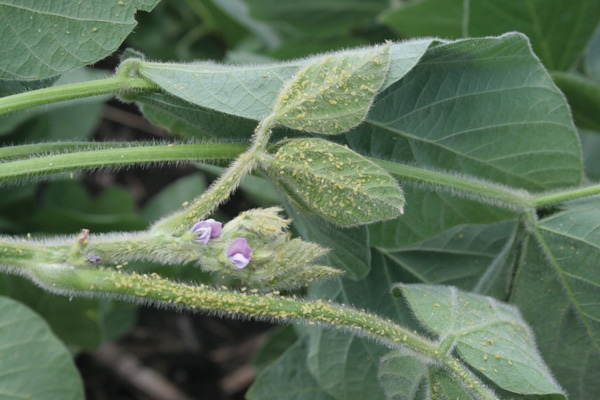March 8, 2012

Predicting insect populations from year to year is difficult, if not impossible, so farmers need to be vigilant and scout. Here are five of the most common problematic insects, listed in no particular order.
1 Soybean aphid: “The most important insect in soybean is still the soybean aphid,” says Erin Hodgson, Iowa State University Extension entomologist. “Throughout the Midwest, soybean aphid densities can be highly variable and some areas are reaching economic threshold every year. It’s important to scout for soybean aphid, especially after bloom, and make timely treatments.” In addition, a mild winter can lead to the successful overwintering of eggs and significant flights of winged aphids into soybean fields during the spring.
2 Western corn rootworm: Even though overall adult densities of Western corn rootworm were low in many areas of Illinois last year, there were reports of excessive root injury to some Bt hybrids that expressed the Cry3Bb1 protein. “The affected fields shared some common features,” Gray says. “They had been in continuous corn for many years and the producers relied upon the same trait for many successive years.” Growers should check their fields carefully in mid to late July for signs of excessive root pruning. “If they discover less than a satisfactory level of protection, they should contact their seed industry representative,” Gray says.
3 Bean leaf beetles: Bean leaf beetles may also benefit from a mild winter. “Early-planted soybean fields adjacent to wooded areas should be scouted for early signs of bean leaf beetle defoliation,” Gray says. Once the adults break their dormancy, they often feed in alfalfa. Then when soybean seedlings begin to emerge, adult beetles leave the alfalfa for the soybean fields.
4 Japanese beetles: Japanese beetles are becoming a more persistent pest in corn and soybeans. “Although economic damage is rarely reached in Iowa, silk clipping and soybean defoliation can appear dramatic near field edges,��” Hodgson says. But further south, the pest has developed a strong foothold. “In Illinois, Japanese beetles can reach economic levels more frequently in corn and soybeans,” Gray says. “The Japanese beetle has been established in corn and soybean fields for a longer period of time in Illinois.”
5 European corn borer: The introduction of insect-resistant corn traits has greatly improved control of the European corn borer. Infestation levels are always difficult to predict from year to year, and the pest can find refuge on other host plants. Although its numbers have been greatly reduced in recent years, scouting remains important.
About the Author(s)
You May Also Like






